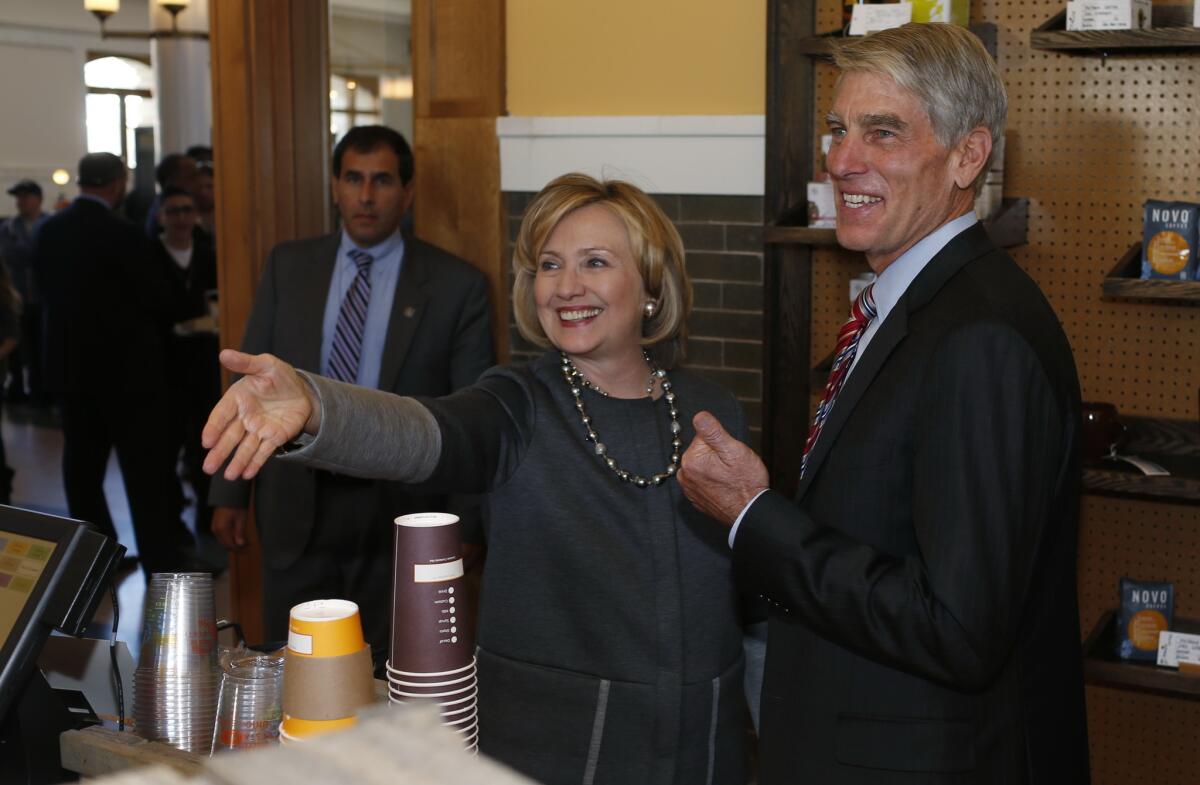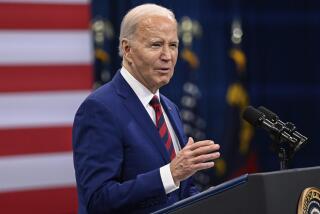Just how close is that Colorado Senate race? Polls differ

If there’s one consistent theme in this year’s midterm election, it’s that no one trusts the polls. That’s made it difficult to figure out how close some of the hottest races are this year.
The prime example last week was the U.S. Senate race in Colorado. Throughout the summer and fall, Democratic Sen. Mark Udall and his Republican challenger, Rep. Cory Gardner, have been locked in what is widely viewed as a very tight race, with the polls seesawing back and forth.
Two new polls showed Gardner ahead of Udall, if narrowly, while a third showed the race still virtually tied. Democratic strategists in Colorado note that Gardner moved into the lead at a time when his campaign, the GOP and allied outside groups had an advantage on the heavily saturated airwaves in Colorado.
But it also came at a time when Gardner’s campaign has been relatively low-profile—holding more intimate events and meet-and-greets with the candidate—while Udall has been out in force on the campaign trail. Among the featured guests at Udall’s events this fall: Bill Clinton, Hillary Rodham Clinton, Massachusetts Sen. Elizabeth Warren and First Lady Michelle Obama.
So what do the latest numbers say about the race in Colorado?
A poll from Suffolk University for USA Today, which was conducted Oct. 18-21 and had a 4.4% margin of error, showed Gardner leading Udall by 7 points in the survey of about 500 likely voters. That was a sizable shift from its mid-September poll, when the race was a dead heat.
Suffolk pollsters also found that “anti-Obama sentiment” appeared to be on the rise in Colorado, adding to the drag on Udall’s numbers, with about 57% of voters saying they disapproved of the job President Obama is doing. On the issue dominating the headlines—Ebola—voters had little confidence in the federal government’s ability to handle the threat. About 57% of respondents said they did not trust the government to handle it properly and only 38% said they did.
But a Reuters/Ipsos poll conducted around the same time, Oct. 13-20, surveying 1,099 voters, showed Gardner leading Udall by just 2 points, 47%-45%, well within the poll’s margin of error.
In a third survey, released Friday by Quinnipiac University, Gardner led Udall 46% to 41%, which was statistically unchanged from Quinnipiac’s Oct. 16 poll.
The accuracy of polls comes down to predicting the right mix of likely voters. The electorate in midterm races tends to be more white and more conservative — which would seem to favor Gardner— but Colorado has thrown a wild card into the mix this year by sending every voter a mail-in ballot for the first time.
“Because it’s the first time with an all-mail ballot, everyone’s playing guessing games with what the turnout will actually look like, and that’s borne out in the polls,” said Colorado Democratic strategist Laura Chapin. “You only have to change the electorate slightly to make a big difference in a swing state like Colorado.”
Douglas Rivers, a professor of political science at Stanford University, noted the wide variation in midterm polls in the predictions of who is going to show up.
“People are using different likely-voter screens,” he said. “And most of the polls don’t give you enough data to tell where they are different from one another.”
In Colorado, Rivers has noticed a wide range in the preponderance of Latino voters in different polls, as well as differing calculations about the percentage of Republicans, Democrats and independents who will cast ballots. Though there are more Republicans registered in the state than Democrats, he notes that 2012 exit polls told a different story – the Colorado electorate that year was 34% Democratic and 29% Republican, he said.
Another complicating factor is that both parties have significantly stepped up their get-out-the-vote activities. The GOP, for example, says it has three times as many field staffers on the ground in Colorado than it did in 2012, when Republican nominee Mitt Romney lost the state to Obama by 5 points.
Still, Gardner’s narrow lead has Republicans feeling bullish about Colorado. Dick Wadhams, the former chairman of the Colorado Republican Party, attributes the movement to the fact that Gardner has run “a smart campaign,” as well as evidence that he’s doing better among Colorado women despite “the pounding he’s taken for seven months” from Udall on issues such as abortion, birth control and Gardner's past support for measures giving full human rights beginning at conception.
Wadhams argued that that emphasis by Udall had backfired – most notably in losing the endorsement of the Denver Post, which said Udall's “obnoxious one-issue campaign is an insult to those he seeks to convince.”
“When you have a campaign this close, and literally millions of dollars of ads on both sides, there is a saturation point at some point,” Wadhams said. “Voters start to tune out, and that’s why I think Cory is headed to a win.”
Democrats say the polls are underestimating the strength of their long-admired ground game. Rallying volunteers for Udall last week in Colorado, the state’s other Democratic U.S. senator, Michael Bennet, repeatedly said that he trailed his 2010 opponent, Ken Buck, in every poll throughout the fall leading up to election. But he ultimately won by an average of 1 vote per precinct.
Udall’s optimism about his race is grounded in those 2010 results.
“We built on the lessons from 2010 and 2012,” Udall recently told reporters on his campaign bus. “I know we’ve got a far superior effort [on the ground] creating excitement.… So we’re going to focus on what we can control, and that is turning out the vote and attracting independents.”
Twitter: @MaeveReston
More to Read
Get the L.A. Times Politics newsletter
Deeply reported insights into legislation, politics and policy from Sacramento, Washington and beyond. In your inbox three times per week.
You may occasionally receive promotional content from the Los Angeles Times.







